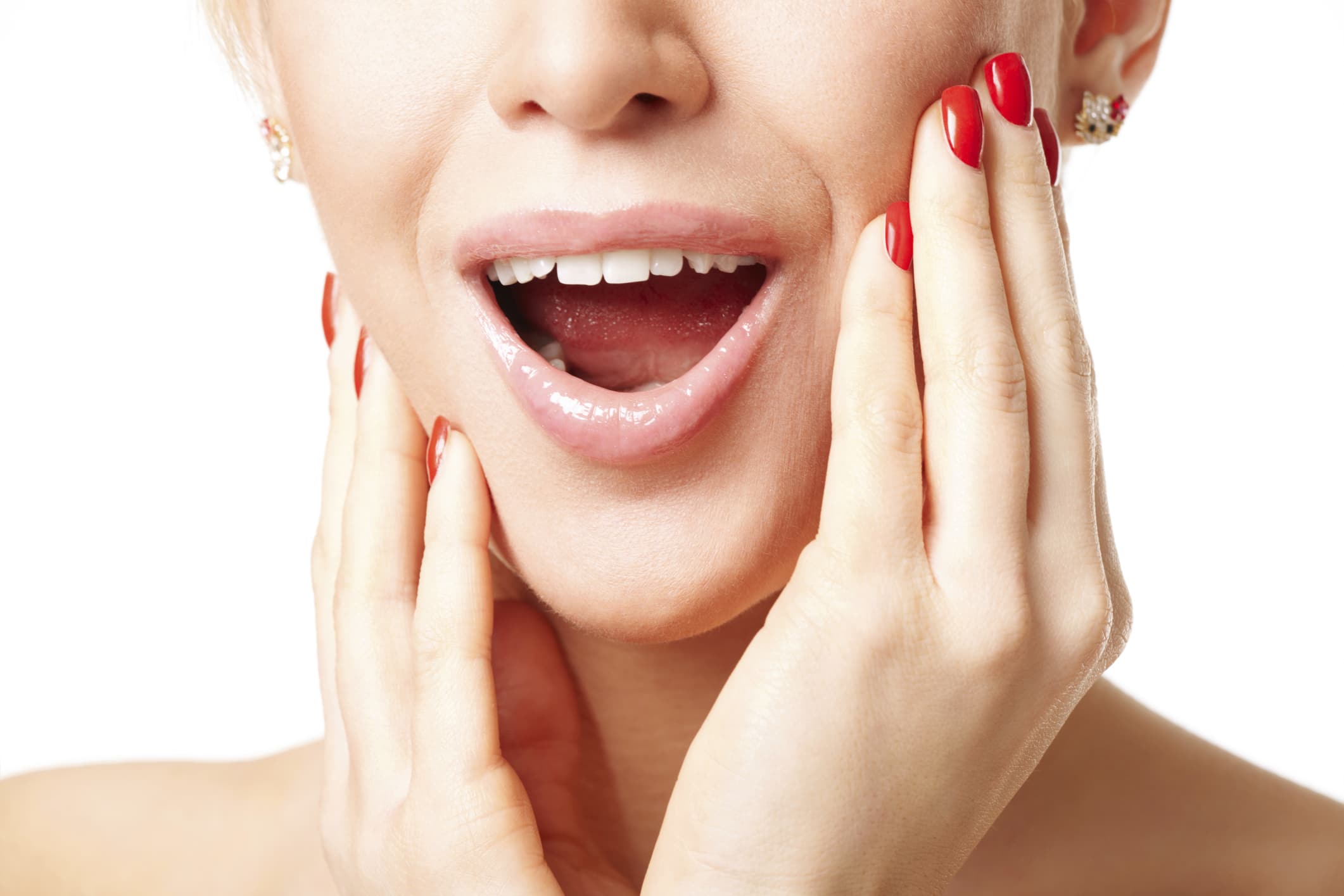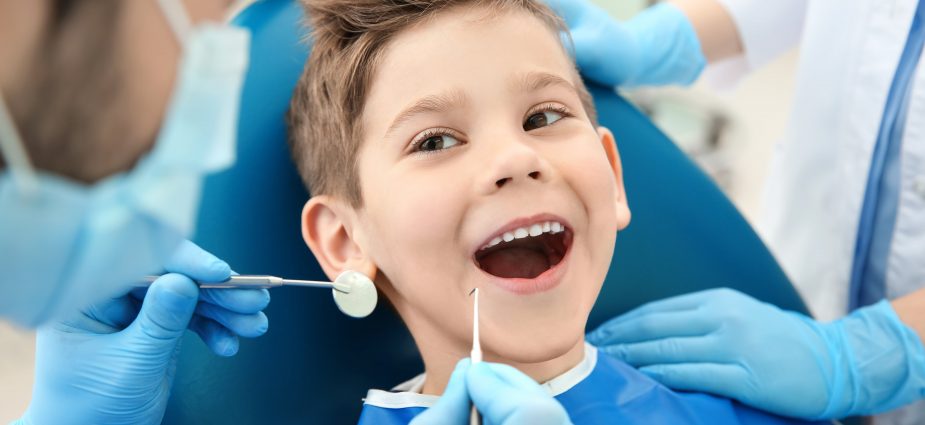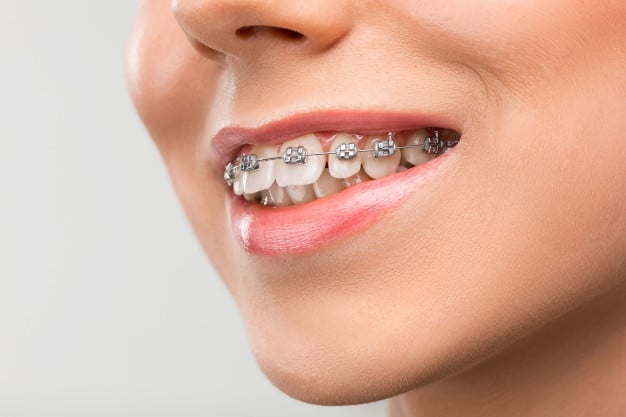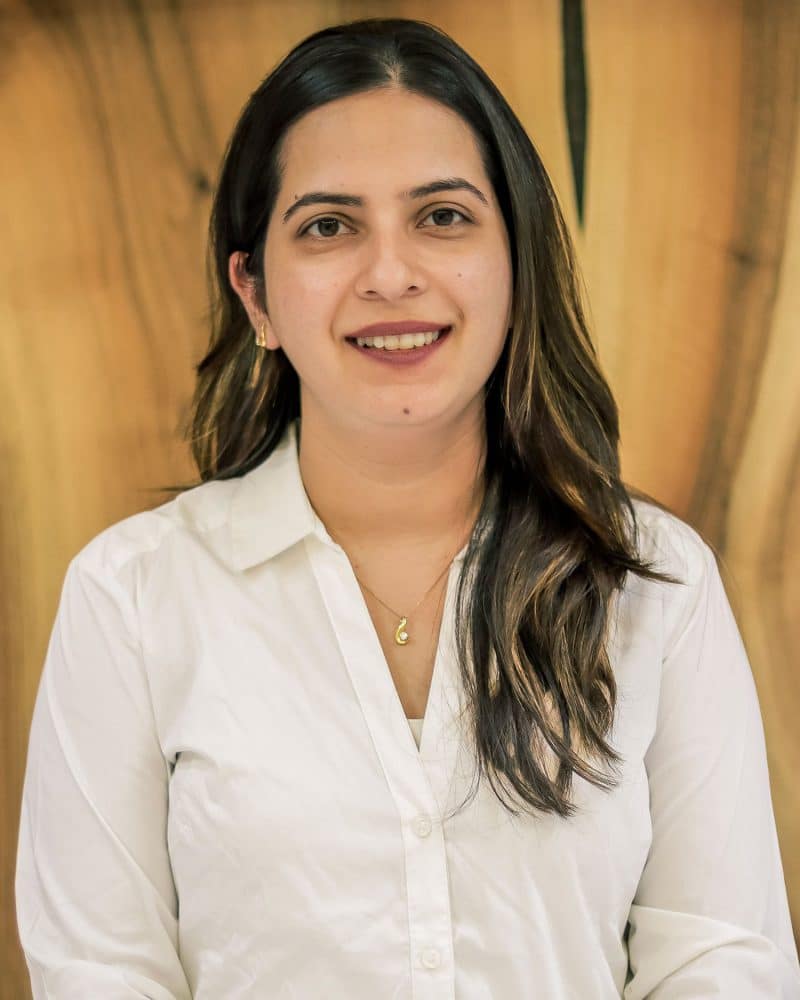What Is Orthodontic Treatment?
Orthodontic treatment is the use of dental tools to straighten or move teeth to improve dental health and appearance. It helps in maintaining your child’s oral health in the long term by fixing misaligned bite patterns and reducing the strain on the jaw muscles.
Orthodontic issues like crooked teeth, protruding, crowding, spacing, and bite irregularities can occur because of many reasons like losing milk teeth very young or bad habits like thumb sucking. At Pandit Clinic, we believe that prevention is always better than cure and so we recommend you regularly bring your child for dental check-ups at our pediatric dentistry practice, where these orthodontic issues can be caught early and corrected easily.
We offer a wide range of solutions for orthodontic issues, including braces, headgear, and Invisalign. You can find more details about our Orthodontic Treatments here. The most common way of correcting severe orthodontic issues is through the use of braces. Keep reading to learn more about what exactly are braces, the different types, and how they work.
What Are Braces?
Braces are dental tools that correct problems like crooked teeth, overcrowding, and misalignment. Braces slowly align the patient’s teeth and jaw to produce an even bite and a beautiful smile.
Most people think braces are uncomfortable, painful, and difficult to maintain. But that is not the case. Orthodontics has come a long way and at Pandit Clinic, we believe in correcting orthodontic issues with as little discomfort as possible. Our expert Pediatric Dentist, Dr. Pratibha Kukreja Pandit makes sure to help you make an informed decision about the best treatment for your child.
Check-Up: Everyone has a unique set of teeth, and so the method of treatment will vary from person to person. Before the treatment begins, your child will have to undergo the following procedures:
- A full and thorough examination of his/her teeth and jaws
- A series of X-rays to better understand the position of the teeth
- A dental cast of the teeth will be taken to evaluate his/her bite
- In case of overcrowding, one or two permanent teeth may have to be extracted, to make space for the teeth to fit perfectly
After a careful examination of your child’s teeth, a treatment plan specific to his/her needs will be customized. At Pandit Clinic, Dr. Pratibha will guide you and help you choose the most suitable type of braces for your child.
Types Of Braces: These days, braces are more than just metal bands. There are many different options available to make sure that everyone has the best possible treatment.
These are some of the possible options if your child needs braces:
Conventional Braces: Conventional or traditional braces are metal brackets that are cemented to the front of the teeth with a bonding agent. They also include flexible wires or archwires that hold the brackets together. The brackets and wires are made of high-quality stainless steel and they apply pressure to the teeth, aligning them slowly. Sometimes, the brackets are linked with delicate rubber bands or metal ties that increase the pressure on the teeth and straighten them.
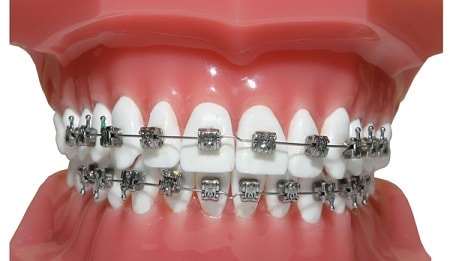
Ceramic Braces: Ceramic braces are similar to conventional braces, but the brackets are made of tooth-colored ceramic instead of stainless steel. They can also be made with clear ceramic. This makes them less noticeable than conventional braces. The ceramic brackets are held together by stainless steel wires. They work in the same way as conventional braces.
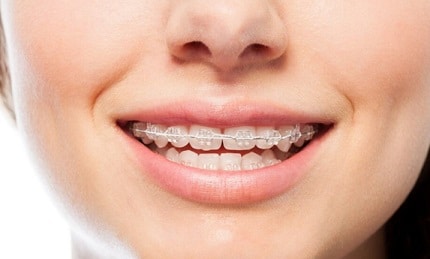
Lingual Braces: Lingual braces are also called “inside braces” as they consist of custom-made metal brackets that are attached to the back of the tooth. These brackets are joined by a metal wire. They are virtually invisible and they straighten the teeth by slowly pulling them inside. Sometimes, elastic bands may be required. Lingual braces are just as effective as conventional or ceramic braces. They can also be harder to clean and your child may need a bit more time to adjust to them.
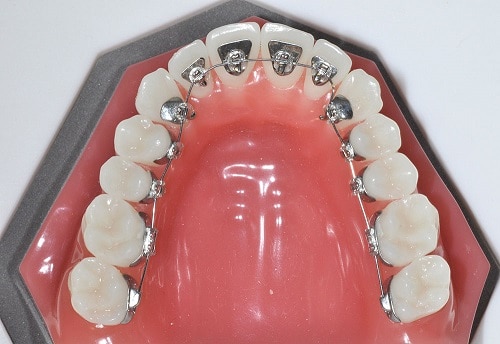
Invisalign: Invisalign is one of the newest options available. They are very different from the other types of braces, mostly because they are not cemented to the teeth. Invisalign consists of a series of custom-made clear trays (also called aligners) that fit over the teeth. These trays are made with Invisalign’s own blend of plastic and are almost unnoticeable. They can be removed for eating, drinking, and cleaning, but they need to be kept in the mouth for at least 20-22 hours. Invisalign uses gentle pressure to slowly align the teeth. They need to be replaced every two weeks with a new set of aligners to adjust for the slow movement of the teeth.
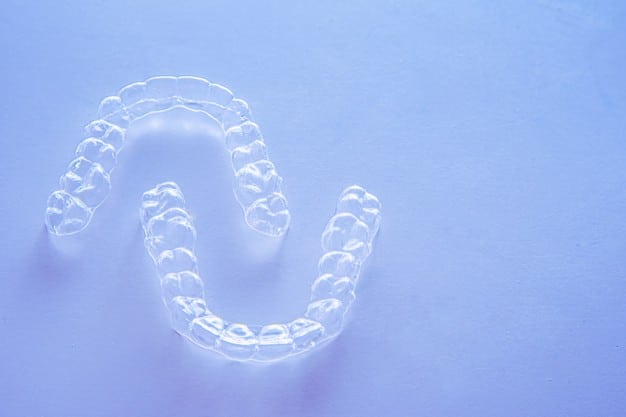
Dr. Pratibha Kukreja Pandit will decide which type of braces would suit your child the best based on her examination, and also the preferences of you and your child. While conventional braces are the most well-known, ceramic braces, lingual braces or Invisalign can be used for the more image-conscious or shy children to reduce any embarrassment. The more adventurous kids can even select the color of the elastic bands for a bright, colorful smile!
How Do Braces Work?
The placement of braces involves a few different components which are:
- Brackets are attached to the teeth through a special (and perfectly safe!) bonding glue.
- The archwire connects all the brackets and controls the movement of the teeth.
- Elastic bands (also called ligature bands or O-rings) are placed around the brackets to increase the pressure on the teeth.
- Spacers are rubber bands or metal rings that are placed between the molars during the appointment. They push the jaw forward and make space for the braces.
- Coil springs are sometimes attached to the archwire to apply pressure between two of the teeth.
- Buccal tubes are metal parts that can be attached to one of the molars to anchor other parts of the braces.
Attaching these components to the teeth may sound scary, but it’s not. It does not hurt in any way and it takes only an hour or two. Usually, the whole process can be completed in a single appointment. Then, after a specific amount of time has passed, the tension in the wire will have to be altered, depending on the progress of the treatment.
As mentioned above, braces slowly and gently apply pressure on the teeth and move them to the desired position. But they also slowly change the shape of the bone underneath the teeth, which strengthens the teeth! This is how braces help improve both the appearance and the function of the teeth and jaw, in the long term.
What Happens After Braces Are Attached?
Getting braces doesn’t hurt, but your child’s mouth will be a little sensitive in the beginning as it adjusts. There will probably be a little pain in the first few days, which can easily be taken care of with prescribed medications.
There may also be some soreness in your child’s mouth where the braces are rubbing against the cheeks in the beginning. In this case, apply the wax given by the orthodontist to the areas where the braces are causing pain. This soreness will stop once the adjustment period (which is usually a few days) is over.
You should also ensure that your child eats only soft foods at the beginning of the treatment, as eating food with a tougher texture may cause pain. After the adjustment period is over your child can return to his/her regular diet, with a few exceptions
Foods To Avoid While Wearing Braces:
Braces are delicate. It is important to be careful while eating because if the braces break, bend, or get loose, it may lead to complications or longer treatment. So make sure that your child avoids eating the following foods:
- Hard foods like apples, nuts, corn on the cob, and dry fruits
- Sticky foods like toffees and caramel
- Sugary and processed foods like candies and soft drinks
- Crunchy foods like popcorn and chips
Plus, if your child has a bad habit of chewing on nails, pencils, or pens, make sure that they break the habit as quickly as possible. Any food or habit that can cause the braces to get damaged should be avoided at all costs.
How To Take Care Of Braces?
The effectiveness of braces both during and after treatment depends a lot on following instructions and maintaining the braces properly. Your child should carefully follow the instructions given so that no problems occur during or after treatment. Especially since braces attract food and plaque which can stain the teeth or cause cavities if they are not brushed properly. But there is no need to worry too much. Maintaining good oral hygiene is the same with or without braces.
The most important thing is for your child to brush his/her teeth at least twice a day with fluoride toothpaste and a soft-bristle brush. Dr. Pratibha Kukreja Pandit will explain to you and your child the proper way to brush teeth while wearing braces. Brushing the teeth or at least using fluoride mouthwash after every meal is recommended. It is also possible to floss the teeth while wearing braces, though it must be done carefully and gently and it may take longer.
While playing sports, your child will have to wear a specially designed mouthguard to protect the inside of his/her mouth. You can get one custom made by our pediatric dentistry practice at Pandit Clinic. It will be made of durable material that will fit comfortably and will protect the soft tissues inside your child’s mouth.
It is also important to regularly visit the clinic to monitor the health of your child’s mouth and the progress of the treatment. Make sure not to miss any appointments as that will likely prolong the treatment. And if something occurs during the treatment like the braces getting loose, bent, or broken, seek help immediately.
What Happens After Braces Are Removed?
- Duration: The duration of the treatment depends on the severity of the issues. If the problem is caught early enough or if it is minor, your child won’t have to wear the braces very long. However, the average length of the treatment is 1 to 2 years. And what happens after the braces are removed is just as important as what happens while your child is wearing braces.
- Removal: Just like the process of attaching the braces, removing them won’t hurt at all. For a few days, your child’s mouth may feel a little sensitive, but that will fade quickly. Also, remember to schedule a dental cleaning as soon as possible after the removal of braces, to clean out any accumulated plaque or stains.
- Retainers: The most important thing after the braces are removed is to make sure that your child wears the retainers. After the braces are removed, the teeth are likely to shift. Retainers are made after taking an impression of your child’s mouth and they help the teeth “retain” their new shape. It is essential to wear the retainers for as long as recommended, or else the teeth will relapse into their original position and the problems will return. In case of orthodontic relapse, your child will likely have to wear braces again. So ensure that your child wears the retainers, so that all the hard work they put in during the treatment does not go to waste.
In the end, getting braces is nothing to be worried about. And due to developments in the field of orthodontics, braces are now much more comfortable and non-intrusive. Wearing braces causes very little change in daily routine and after some time, your child will get used to them. At Pandit Clinic, we take every step necessary to ensure that your child has the best possible treatment. Dr. Pratibha Kukreja Pandit is an expert in orthodontics and she will make sure to provide the treatment that will get optimal results. Your child will not only have a stunning smile, but also a healthy mouth.
Virtual Video Consultations
100% SAFE AND SECURE CALLS WITH ENCRYPTION. YOUR PRIVACY AND CONFIDENTIALITY IS GUARANTEED.
Start here, by making an appointment for a virtual consultation with our expert Dr. Pratibha Kukreja Pandit (NEW PATIENTS ONLY).
Dr. Pratibha Kukreja Pandit is available for Virtual Video Consultations from Monday – Saturday between the hours of 11 am – 2pm and 4pm – 7pm.
If you are already our valued patient with questions or have an emergency please contact the clinic on +91 9822053446
Consult Dr. Pratibha Kukreja Pandit
(Pediatric Dentist)
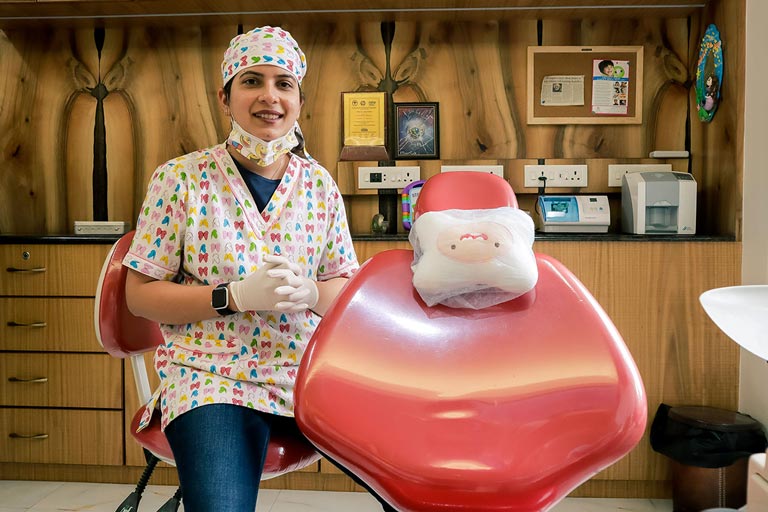
Virtual Video Consultation Fees Rs. 500
The Consultation Fees Must Be Paid Online by GOOGLE PAY BEFORE YOUR APPOINTMENT. See The Instructions On Appointment Confirmations
Your virtual video consultation includes:
- Discussion of problems that your child is facing like tooth pain, swelling or any other emergencies
- Dr. Pratibha will recommend a course of treatment or medications for your child.
Meet the Doctor
Pediatric and Preventive Dentistry Specialist
Dr. Pratibha is the Chief Dentist at Pandit Clinic. She is also a Consultant Pediatric Dentist at Kotbagi Hospital and KEM Hospital, Pune.
Dr. Pratibha has trained at the prestigious Chang Gung Memorial Hospital, Taiwan, in advanced areas including Pediatric dental treatment under General Anesthesia and Intravenous sedation, Dental Rehabilitation of children with special health care needs, and Nasoalveolar molding and dental rehabilitation of cleft lip and cleft palate.
She’s the lifetime member of Student Clinician Association, American Dental Association (SCADA), USA.
Professional Affiliations and Skills
- Trained in Pediatric dental treatment under General Anesthesia and Intravenous sedation at Chang Gung Memorial Hospital, Taiwan
- Trained in Dental Rehabilitation of children with special health care needs at CGMH, Taiwan
- Trained in Nasoalveolar molding and dental rehabilitation of Cleft lip and Cleft Palate at craniofacial centre, CGMH, Taiwan
- Awarded Lifetime membership, SCADA (Student Clinician Association, American Dental Association), USA.
You Might Be Interested In
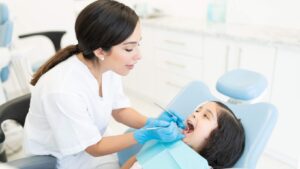
Supernumerary Teeth and Baby Teeth: Implications for Transitioning to Adult Teeth
🎵 Smiles are bright, teeth all gleam, But beneath, there’s more than it seems. Jaw and cysts, the hidden pair, Let’s uncover what’s hidden there!🎵

How Is General Anesthesia Used In Pediatric Dentistry?
Much of Pediatric dentistry involves treating dental problems in children and young adults. It’s a field of dentistry that includes diagnosis, prevention, and treatment for





